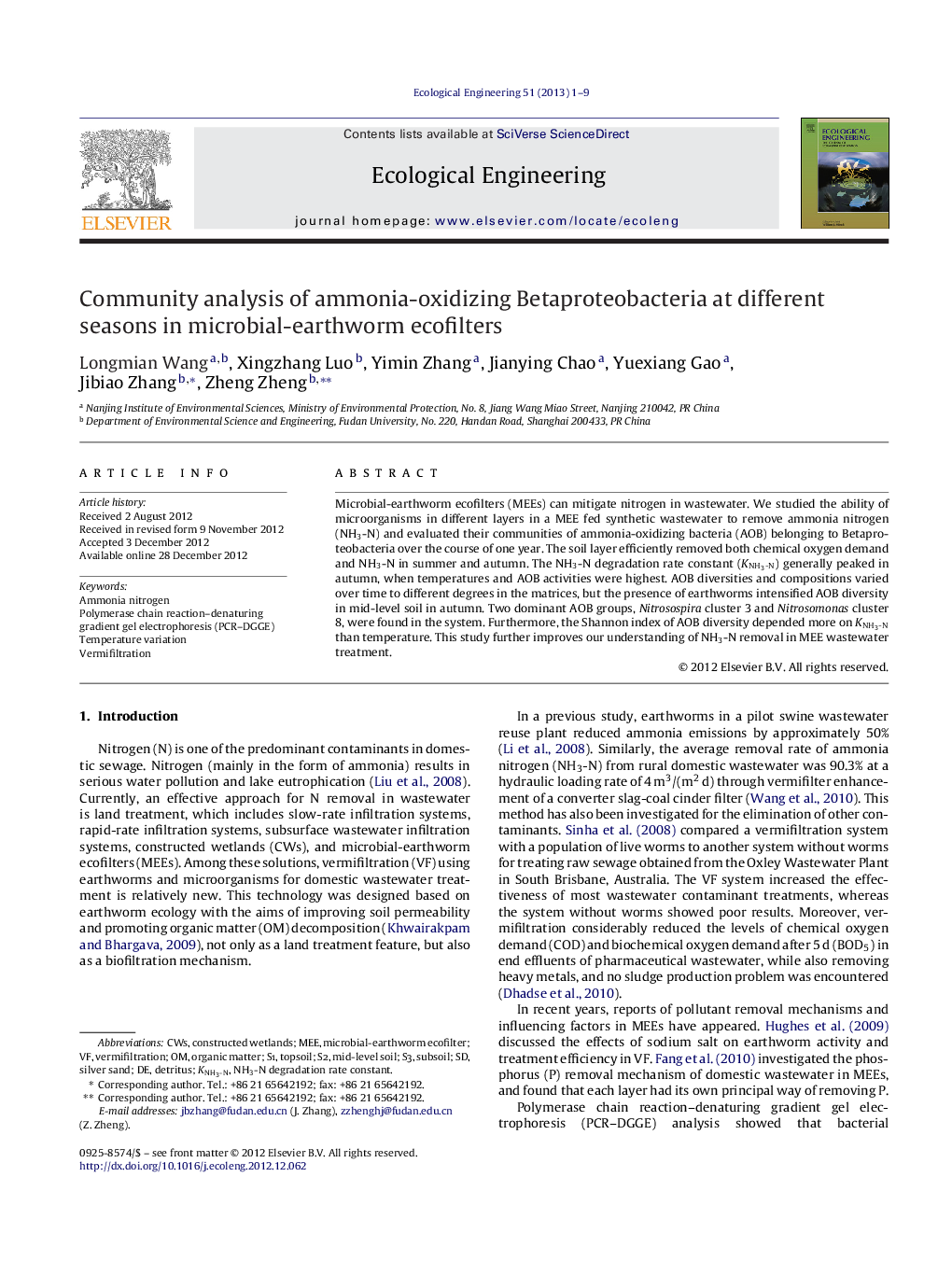| Article ID | Journal | Published Year | Pages | File Type |
|---|---|---|---|---|
| 4389822 | Ecological Engineering | 2013 | 9 Pages |
Microbial-earthworm ecofilters (MEEs) can mitigate nitrogen in wastewater. We studied the ability of microorganisms in different layers in a MEE fed synthetic wastewater to remove ammonia nitrogen (NH3-N) and evaluated their communities of ammonia-oxidizing bacteria (AOB) belonging to Betaproteobacteria over the course of one year. The soil layer efficiently removed both chemical oxygen demand and NH3-N in summer and autumn. The NH3-N degradation rate constant (KNH3-NKNH3-N) generally peaked in autumn, when temperatures and AOB activities were highest. AOB diversities and compositions varied over time to different degrees in the matrices, but the presence of earthworms intensified AOB diversity in mid-level soil in autumn. Two dominant AOB groups, Nitrosospira cluster 3 and Nitrosomonas cluster 8, were found in the system. Furthermore, the Shannon index of AOB diversity depended more on KNH3-NKNH3-N than temperature. This study further improves our understanding of NH3-N removal in MEE wastewater treatment.
► Ammonia-oxidizing Betaproteobacteria communities varied by matrix and season, and earthworms enhanced diversity. ► Nitrosospira cluster 3 and Nitrosomonas cluster 8 dominated the ammonia-oxidizing Betaproteobacteria community. ► Peak ammonia degradation (KNH3-NKNH3-N) in most layers occurred at 18.9 °C in autumn. ► AOB diversity was more strongly correlated with KNH3-NKNH3-N than with temperature.
